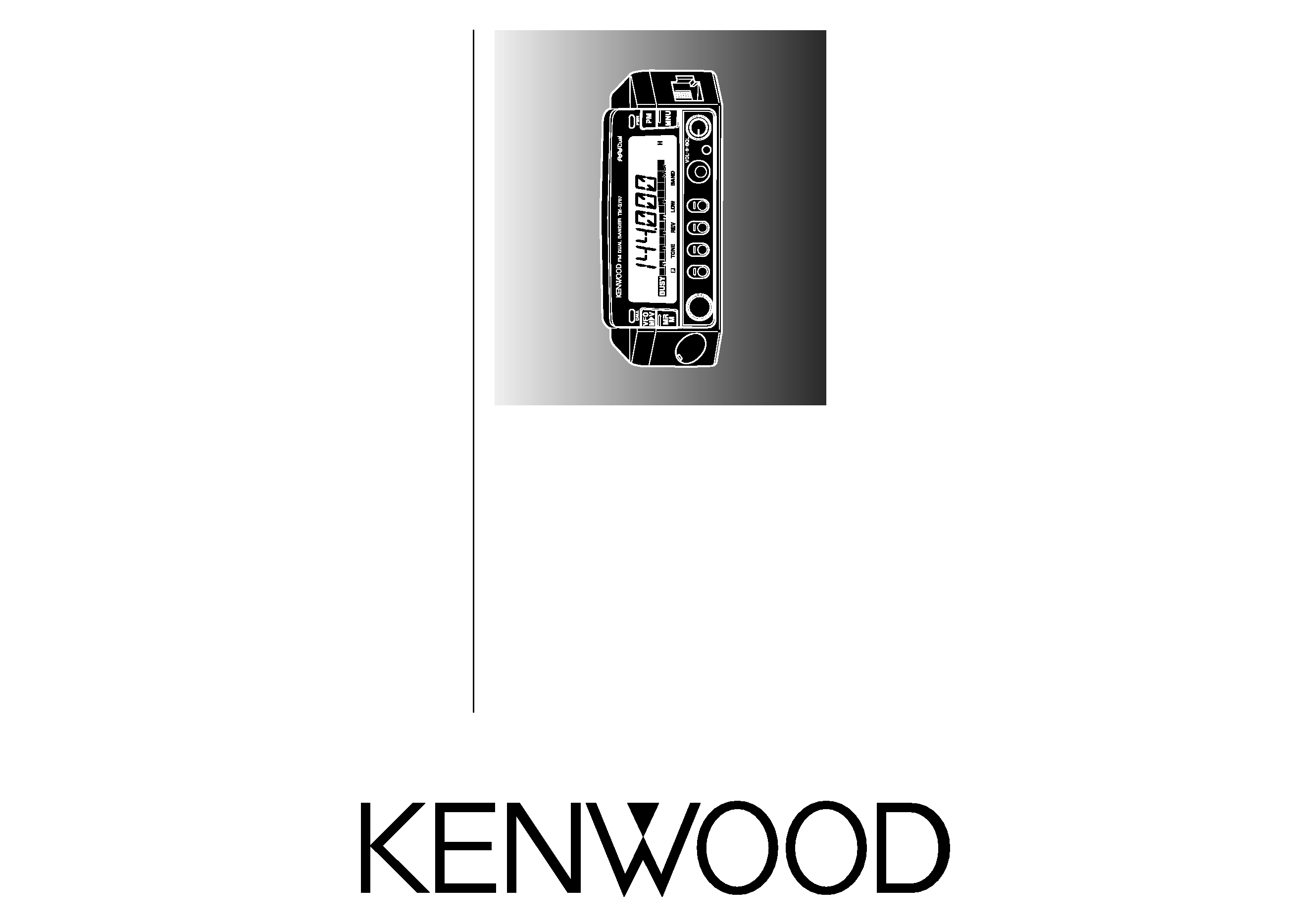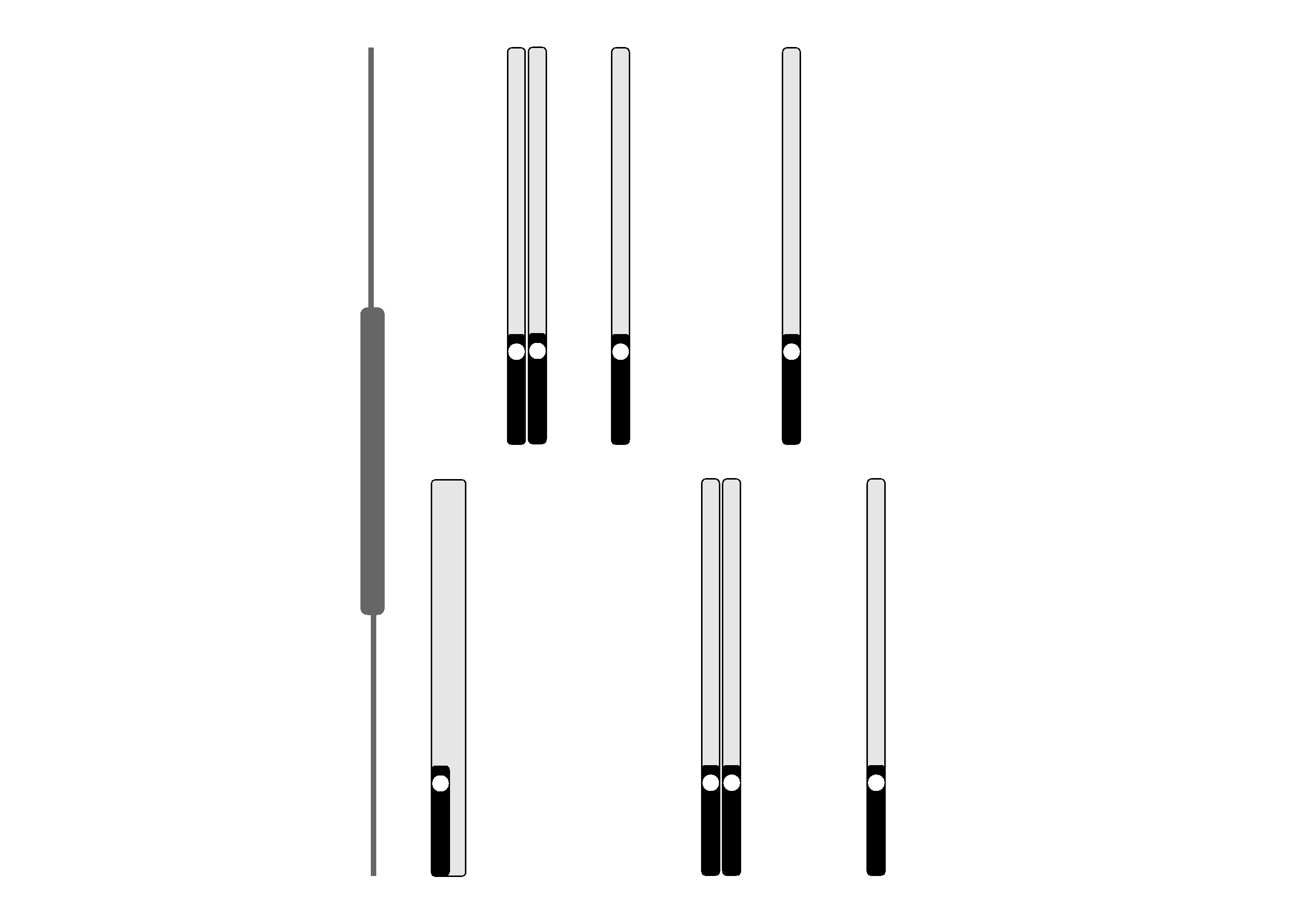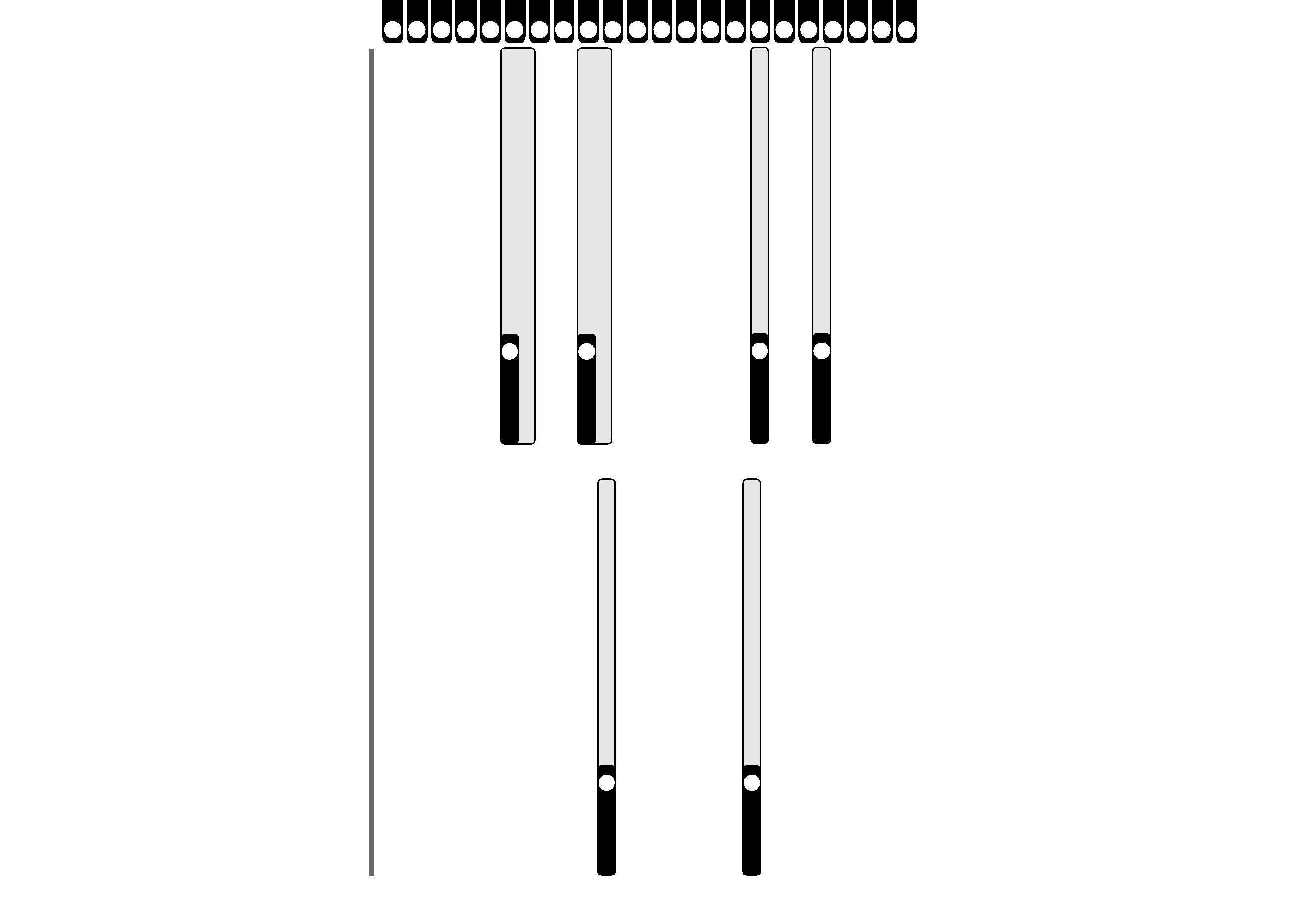
© B62-0864-10 (K,E,M)
09 08 07 06 05 04 03 02 01
KENWOOD CORPORATION
INSTRUCTION MANUAL
144/440 MHz FM DUAL BANDER
144/430 MHz FM DUAL BANDER
TM-G707A
TM-G707A
144/430 MHz FM DUAL BANDER
TM-G707E

N-1
THANK YOU!
We are grateful you decided to purchase this
KENWOOD FM transceiver. This series of mobile
transceivers was developed to satisfy the requirement
for a compact rig that's simple to operate yet contains
numerous sophisticated features. The dual band
operation will be appreciated by hams who want access
to VHF and UHF bands with a transceiver smaller than
some single banders.
KENWOOD believes that the compact size, coupled with
the reasonable cost, will meet your satisfaction.
MODELS COVERED BY THIS MANUAL
The models listed below are covered by this manual.
TM-G707A:
144/440 MHz FM Dual Bander
(U.S.A./ Canada)
TM-G707A:
144/430 MHz FM Dual Bander
(General market)
TM-G707E:
144/430 MHz FM Dual Bander
(Europe)
FEATURES
This transceiver has the following main features.
·
Enhanced Programmable Memory (PM) channels
store virtually entire current operating environments
for your quick recall.
·
Contains a total of 180 memory channels
programmable with separate receive and transmit
frequencies as well as simplex frequencies, and other
various data.
·
Allows each memory channel to be named using up
to 7 alphanumeric characters; you may assign a
name such as a callsign or repeater name.
·
Provides Easy Operation mode for hams who want to
use only the basic functions for now.
·
If programmed, the built-in Continuous Tone Coded
Squelch System (CTCSS) rejects unwanted calls
from other persons who are using the same
frequency.
·
Equipped with an easy-to-read large LCD with
alpha-numeric display capability.
·
The compact front panel is detachable from the main
unit. If used with an optional front panel kit, the
separated panel can be mounted in a convenient
different place.
·
The dedicated DATA connector is available for
1200 bps or 9600 bps Packet Operation.

i
1
2
3
4
5
6
7
8
9
10
11
12
13
14
15
16
17
18
19
20
21
22
PRECAUTIONS
Please observe the following precautions to prevent
fire, personal injury, and transceiver damage:
·
When operating mobile, do not attempt to configure
your transceiver while driving because it is simply
too dangerous.
·
Be aware of local laws pertaining to the use of
headphones/headsets while driving on public
roads. If in doubt, do not wear headphones while
mobiling.
·
Do not transmit with high output power for
extended periods. The transceiver may overheat.
·
Do not modify this transceiver unless instructed by
this manual or by KENWOOD documentation.
·
Do not expose the transceiver to long periods of
direct sunlight nor place the transceiver close to
heating appliances.
·
Do not place the transceiver in excessively dusty
areas, humid areas, wet areas, nor on unstable
surfaces.
·
If an abnormal odor or smoke is detected coming
from the transceiver, turn OFF the power
immediately. Contact a KENWOOD service station
or your dealer.
·
The transceiver is designed for a 13.8 V power
source. Never use a 24 V battery to power the
transceiver.
NOTICES TO THE USER
One or more of the following statements may be
applicable:
FCC WARNING
This equipment generates or uses radio frequency energy. Changes or
modifications to this equipment may cause harmful interference unless
the modifications are expressly approved in the instruction manual. The
user could lose the authority to operate this equipment if an unauthorized
change or modification is made.
INFORMATION TO THE DIGITAL DEVICE USER REQUIRED BY
THE FCC
This equipment has been tested and found to comply with the limits for a
Class B digital device, pursuant to Part 15 of the FCC Rules. These
limits are designed to provide reasonable protection against harmful
interference in a residential installation.
This equipment generates, uses and can generate radio frequency
energy and, if not installed and used in accordance with the instructions,
may cause harmful interference to radio communications. However,
there is no guarantee that the interference will not occur in a particular
installation. If this equipment does cause harmful interference to radio or
television reception, which can be determined by turning the equipment
off and on, the user is encouraged to try to correct the interference by
one or more of the following measures:
·
Reorient or relocate the receiving antenna.
·
Increase the separation between the equipment and receiver.
·
Connect the equipment to an outlet on a circuit different from that to
which the receiver is connected.
·
Consult the dealer for technical assistance.
When condensation occurs inside the transceiver:
Condensation possibly occurs inside the transceiver in such a case
where the room is warmed using a heater on cold days or where the
transceiver is quickly moved from a cold room to a warm room. When
condensation occurs, the microcomputer and/or the transmit/receive
circuits may become unstable, resulting in transceiver malfunction. If this
happens, turn OFF the transceiver and just wait for a while. When the
condensed droplets disappear, the transceiver will function normally.

ii
SELECTING A BAND .............................................. 15
SELECTING FREQUENCIES .................................. 16
Tuning Control .................................................... 16
Microphone [UP]/ [DWN] Buttons ........................ 16
TRANSMITTING ...................................................... 17
Selecting Output Power ...................................... 17
CHAPTER
5
EASY OPERATION
CHAPTER
6
MENU SET-UP
WHAT IS A MENU? .................................................. 19
MENU ACCESS ...................................................... 19
MENU CONFIGURATION ....................................... 20
CHAPTER
7
OPERATING THROUGH REPEATERS
REPEATER ACCESS .............................................. 22
Selecting Offset Direction .................................... 23
Selecting Offset Frequency ................................. 23
Activating Tone Function ..................................... 24
Selecting a Tone Frequency ................................ 24
Automatic Repeater Offset
(U.S.A./ Canada/ Europe Only) ........................... 25
REVERSE FUNCTION ............................................ 26
CHAPTER
8
MEMORY CHANNELS
SIMPLEX & REPEATER OR ODD-SPLIT MEMORY
CHANNEL? ............................................................. 27
STORING SIMPLEX FREQUENCIES OR
STANDARD REPEATER FREQUENCIES ............... 28
STORING ODD-SPLIT REPEATER
FREQUENCIES ....................................................... 28
RECALLING MEMORY CHANNELS ....................... 29
CLEARING MEMORY CHANNELS ......................... 29
SUPPLIED ACCESSORIES ...................................... 1
CONVENTIONS FOLLOWED IN THIS MANUAL ....... 1
CHAPTER
1
PREPARATION FOR MOBILE AND FIXED
STATION OPERATION
MOBILE INSTALLATION ........................................... 2
Installation Example .............................................. 2
Installation Steps .................................................. 2
DC POWER CABLE CONNECTION .......................... 3
Mobile Operation .................................................. 3
Fixed Station Operation ........................................ 4
Replacing Fuses ................................................... 5
ANTENNA CONNECTION ......................................... 5
ACCESSORY CONNECTIONS ................................. 6
External Speaker .................................................. 6
Microphone ........................................................... 6
PACKET EQUIPMENT CONNECTIONS .................... 6
CHAPTER
2
YOUR FIRST QSO
CHAPTER
3
GETTING ACQUAINTED
BASIC TRANSCEIVER MODES ................................ 8
BUTTON FUNCTION DISPLAY ................................. 9
FRONT PANEL ........................................................ 10
REAR PANEL .......................................................... 12
MICROPHONE ........................................................ 13
INDICATORS ........................................................... 14
CHAPTER
4
OPERATING BASICS
SWITCHING POWER ON/OFF ............................... 15
ADJUSTING VOLUME ............................................ 15
ADJUSTING SQUELCH .......................................... 15
CONTENTS

iii
1
2
3
4
5
6
7
8
9
10
11
12
13
14
15
16
17
18
19
20
21
22
NAMING MEMORY CHANNELS ............................. 30
SWITCHING MEMORY NAME/
FREQUENCY DISPLAY .......................................... 30
CALL CHANNEL ...................................................... 31
Recalling the Call Channel .................................. 31
Changing Call Channel Contents ........................ 31
MEMORY ¬ VFO TRANSFERS .............................. 32
CHANNEL DISPLAY FUNCTION ............................. 32
INITIALIZING MEMORY .......................................... 33
Partial Reset (VFO) ............................................. 33
Full Reset (Memory) ........................................... 33
CHAPTER
9
PROGRAMMABLE MEMORY (PM)
PROGRAMMABLE INFORMATION ......................... 34
APPLICATION EXAMPLES ..................................... 35
STORING DATA IN PM CHANNELS ........................ 36
RECALLING PM CHANNELS .................................. 36
AUTO PM CHANNEL STORAGE ............................ 37
RESETTING PROGRAMMABLE MEMORY ............ 37
CHAPTER
10
SCAN
SCAN RESUME METHODS .................................... 39
Selecting Scan Resume Method ......................... 39
VFO SCAN .............................................................. 40
MEMORY SCAN ...................................................... 40
Locking Out Memory Channels ........................... 41
MHz SCAN .............................................................. 41
PROGRAM SCAN ................................................... 42
Setting Scan Limits ............................................. 42
Using Program Scan ........................................... 43
CALL/VFO SCAN .................................................... 43
CALL/MEMORY SCAN ............................................ 43
PRIORITY SCAN ..................................................... 44
Storing Frequency in Priority Channel ................. 44
Selecting Priority Scan Method ........................... 45
Using Priority Scan ............................................. 45
CHAPTER
11
CONTINUOUS TONE CODED SQUELCH
SYSTEM (CTCSS)
USING CTCSS ........................................................ 46
Automatic Tone Frequency ID ............................. 47
CHAPTER
12
DUAL TONE MULTI-FREQUENCY (DTMF)
FUNCTIONS (U.S.A./ CANADA ONLY)
MAKING DTMF CALLS ........................................... 48
Autopatch ........................................................... 48
Mic Keypad Confirmation Tones .......................... 48
STORING DTMF NUMBERS FOR AUTOMATIC
DIALER ................................................................... 49
CONFIRMING STORED DTMF NUMBERS ............ 49
TRANSMITTING STORED DTMF NUMBERS ......... 49
CHAPTER
13
PROGRAMMABLE FUNCTION (PF) KEYS
ASSIGNING FRONT PANEL KEY FUNCTIONS ...... 50
ASSIGNING SPECIAL KEY FUNCTIONS ............... 51
CHAPTER
14
AUXILIARY FUNCTIONS
TIME-OUT TIMER (TOT) ......................................... 52
AUTOMATIC POWER OFF (APO) ........................... 52
PROGRAMMABLE VFO .......................................... 53
